Online Enquiry Form
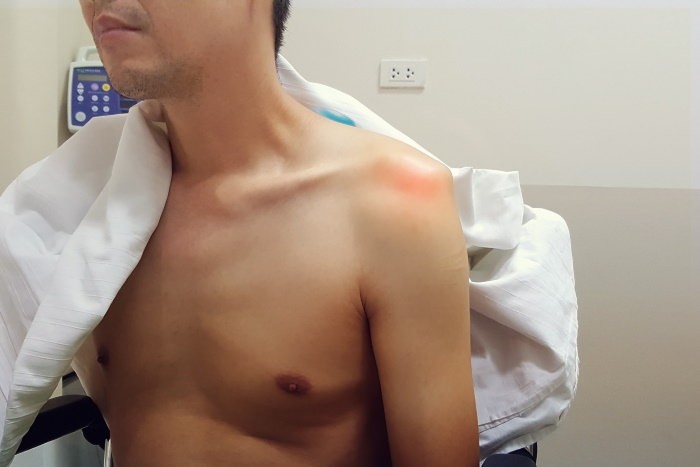
Overview
Acromioclavicular (AC) joint injury, also known as “AC joint separation”, is a common condition suffered by 20-30 year old males playing contact sports whereby traumatic impact to the point of the shoulder causes injury to the ligaments that hold the collar bone down against the point of the shoulder resulting in the collar bone separating from the shoulder. Not to be confused with shoulder dislocation injury, AC joint separation is a unique condition with completely different signs and symptoms, requiring different types of treatment. There are 6 grades of AC joint separation injury according to the severity of the injury sustained.
Grade 1 AC Joint Separation
Mild sprain of the AC ligament with no collar bone elevation.
Grade 2 AC Joint Separation
Complete rupture of the AC ligament, AC joint capsule, sprained coraco-claviclular (CC) ligament and mild collar bone elevation.
Grade 3 AC Joint Separation
Complete rupture of the AC ligament, AC joint capsule and CC ligament with detached deltoid and trapezius muscles and mild elevation of the collar bone above the level of the acromion or point of the shoulder.
Grade 4 AC Joint Separation
Complete rupture of the AC ligament, AC joint capsule and CC ligament with detached deltoid and trapezius muscles and mild elevation of the collar bone and posterior displacement of the clavicle.
Grade 5 AC Joint Separation
Complete rupture of the AC ligament, AC joint capsule and CC ligament with detached deltoid and trapezius muscles and marked elevation of the clavicle above and toward the back of the level of the acromion, or point of the shoulder.
Grade 6 AC Joint Separation
Complete rupture of the AC ligament, AC joint capsule and CC ligament with detached deltoid and trapezius muscles and marked depression of the clavicle down toward the coracoid process of the shoulder blade.
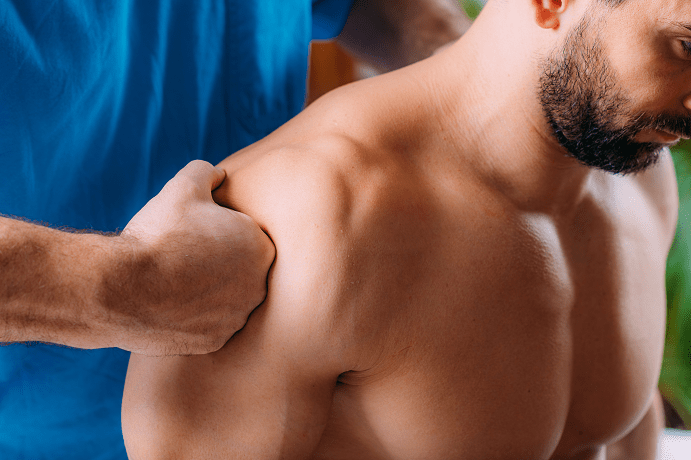
Symptoms
Acromioclavicular joint injury may exhibit the following symptoms:
- Very painful.
- Clicking, cracking and unusual sounds with shoulder movement.
- Loss of some shoulder movement, in particular reaching up and across the body.
- Disfigurement of the shoulder with an abnormal bony bump at the top of the shoulder.
- Strong muscle contraction and spasm of the shoulder.
- Associated swelling and bruising of the shoulder.
Causes
The AC joint is found at the very top of the shoulder where the collar bone meets the acromion of the shoulder. Similar to breaking a collarbone, AC joint injury is caused by a fall injury or a direct impact injury.
Fall Injury
Falls can be sustained while you are moving or stationary and from a low height or from a greater height. Falls onto the top of the shoulder or falling onto an outstretched arm risk AC joint damage.
Direct Impact Injury
Contact sports like AFL, rugby and NRL where fast-moving players are stopped suddenly by impact to the point of the shoulder, or when they are tackled and have their shoulder driven into the ground, players risk AC joint injury. The more the impact is from the top of the shoulder, the more likely the injury.
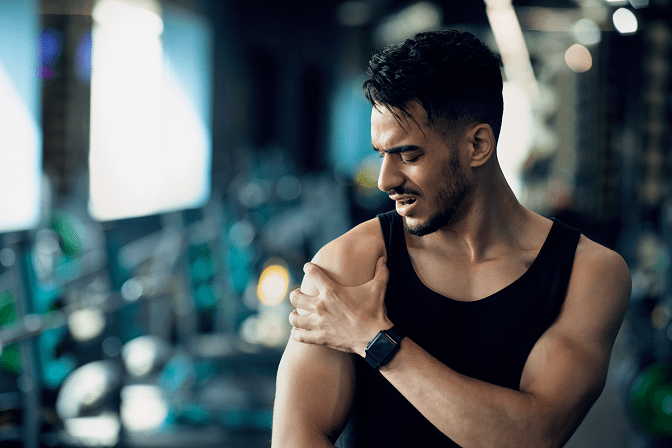
Diagnosis
To diagnose a broken collar bone, the following will be taken into consideration:
- Nature of the injury (sports, work, accident, overuse etc).
- Cause of the injury (impact, collision, fall, repetitive/slow onset).
- Context of the suffering (age, return to sport, work, impact on daily living).
- Perform a physical examination to ascertain pain and range of movement.
- Perform specialised diagnostic tests to confirm diagnosis.
Acute AC Joint Separation
Acute means sudden and injury occurs immediately. Injuries of this kind can be tested by pressing down on the AC joint to verify movement at the joint indicating it has separated and by xray.
Xray imaging should show the AC joint with the patient standing without holding a weight and then again with holding a weight. Separation comparisons between the two images will suggest the grade or severity of injury.
Chronic Acromioclavicular Joint Pain
Chronic in nature means prolonged pain when injury occurs frequently over a period of more than 6 months.
AC joint separation injuries can become chronic shoulder conditions if they are not treated correctly. These injuries can reoccur with regular frequency where ongoing pain, swelling and inflammation of the condition may occur.

Treatment
Non-Surgical Treatment
An AC joint separation injury is typically not indicated for surgery. The non-surgical treatment of the injury requires:
- Rest and immobilisation by strapping the AC joint down and using a collar and cuff sling.
- Pain and anti-inflammatory medication.
- Consideration for surgery.
- Physiotherapy rehab protocol.
Surgical Treatment
In severe AC joint separations cases where the patient wishes to return to high-demand overhead activities, there may be some consideration for surgery. AC joint stabilisation surgery aims to reduce collar bone separation from the shoulder.
The goal of AC joint stabilisation surgery is to bring the collar bone back to the AC joint of the shoulder and to fix it there. Depending on the amount of separation of the collar bone from the AC joint, and for patient-specific reasons, Dr Gupta will choose to bring the collar bone back to the AC joint by using either a synthetic graft or an allograft.
Synthetic graft is a low-profile graft used in most cases by itself or in conjunction with a biological graft.
Allograft is a biological graft, usually from the tissue bank, that is used to strengthen a synthetic graft stabilisation of the AC joint.
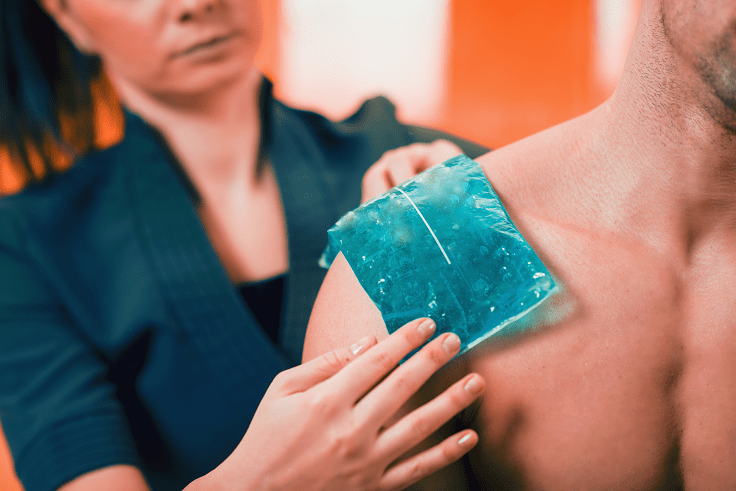
Post Operative Rehabilitation
You will achieve the best surgical outcome if you follow up surgery with a matching course of rehabilitation. Following surgery, Dr Gupta will outline the most appropriate rehabilitation protocol for your physiotherapist to follow and communicate with your healthcare team to ensure that you receive the best post-operative treatment.
Please contact our friendly team on 02 9687 8344 or make an online enquiry here.
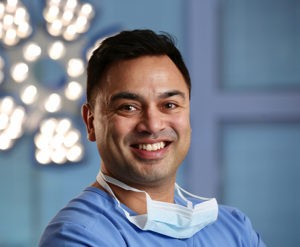
Dr Manish Gupta | MBBS FRACS FAOrthoA
Dr Manish Gupta is a renowned orthopaedic surgeon specialising in upper limb surgery including the shoulder, elbow and wrist.